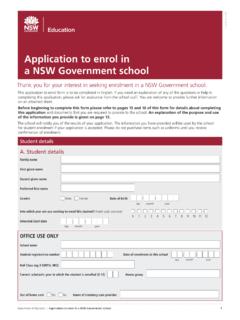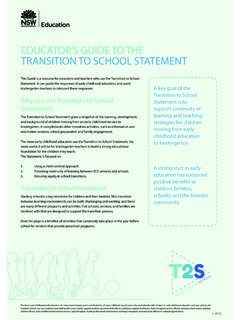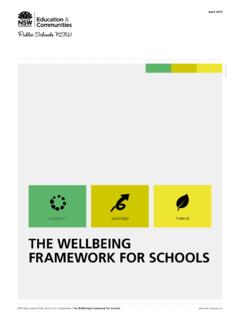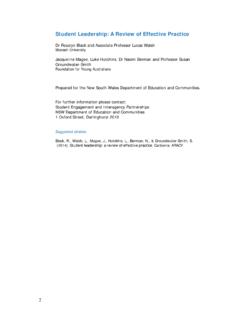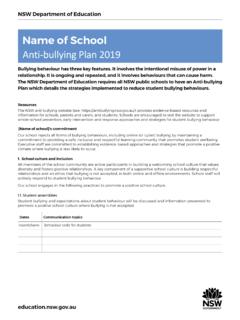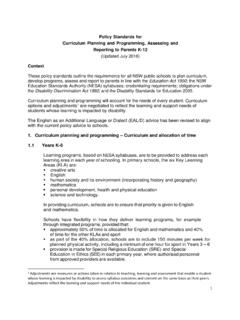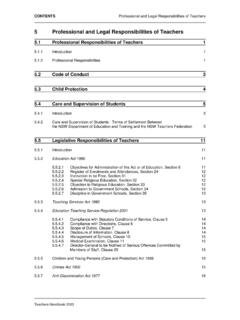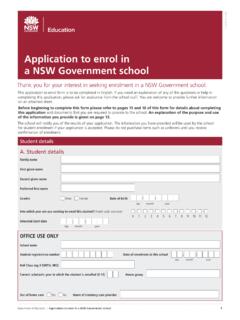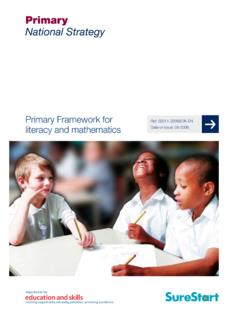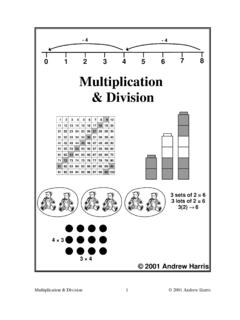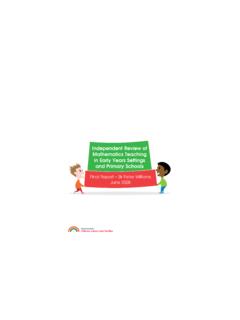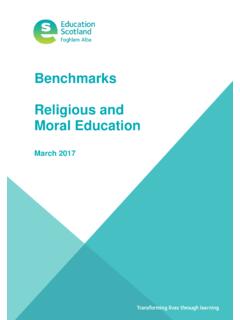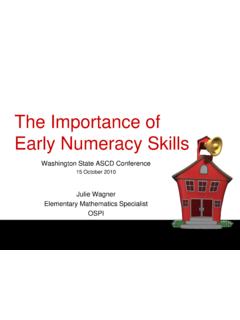Transcription of Effective reading - Kindergarten to Year 2
1 NSW Department of Education Effective reading Kindergarten to Year 2. A guide to support conversations about evidence based practice in reading 2022 Update Literacy and numeracy February 2022. Contents Purpose of the resource 3. reading comprehension evidence base 4. Leading to improve reading 6. Phonological awareness 8. Phonics 11. Fluency 14. Vocabulary 17. reading comprehension 21. References 24. Hyperlinks 25. This document is designed for online use. Refer to page 25 for a list of full URLs for hyperlinked text if required. Effective reading Kindergarten to Year 2 2. Purpose of the resource The purpose of this guide is to support directors, educational leadership, principals, school leadership teams and teachers to have informed conversations about evidence-based reading instruction in all key learning areas across the K-2 school context.
2 It is critical in the first three years of schooling that students develop the foundational skills in reading . This guide can: assist with an analysis of current practices help to inform planning for school improvement in reading suggest ways to build capacity and understanding of Effective reading with explicit classroom practices and professional learning resources. Situational analysis This guide can be used as part of the situational analysis in the following ways: Looking inward includes analysis of data, such as evidence of staff knowledge and perceptions around reading , and evidence of students' current skills in reading . The guide should be used in conjunction with a thorough analysis of internal and external measures such as: Best Start Kindergarten Assessment Phonological Awareness Diagnostic Assessment Phonics Screening Check school-based data national Literacy Learning progression EAL/D Learning progression .
3 Looking outward includes comparing the school's approach to the teaching of reading with the research on Effective reading instruction. This guide: explains the components of reading instruction describes evidence-based practices for reading instruction describes the roles and responsibilities of all stakeholders. Looking forward includes making decisions in response to information gained in the Looking inward and Looking outward phases. This guide makes suggestions for ways to adapt and improve reading instruction across Kindergarten to Year 2. Effective reading Kindergarten to Year 2 3. reading comprehension evidence base reading is a complex cognitive process. It requires our brains to make new connections between the parts that were designed to enable us to develop oral language and process visual information.
4 Learning to read requires explicit teaching in order for our brains to make those new connections. The Simple View of reading (Gough and Tunmer, 1986) suggests that reading comprehension is the product of two sets of skills: decoding and linguistic comprehension. Since Gough and Tunmer's original paper, many researchers have provided evidence that measures of decoding and linguistic comprehension each predict reading comprehension and its development, and together the two components account for almost all variance in this ability' (Castles, Rastle and Nation, 2018 ). The work of Hollis Scarborough (2001) further developed the Simple View of reading through the use of a rope metaphor with strands of the rope representing the various interconnected components of skilled reading (refer to image below).
5 This framework expands linguistic/language comprehension to include background knowledge, vocabulary knowledge, language structures, verbal reasoning and literacy knowledge. Scarborough also expanded the decoding/word recognition component of the Simple View of reading to highlight the importance of phonological awareness, decoding and sight recognition. Scarborough, (2001). Connecting early language and literacy to later reading (dis)abilities: Evidence, theory and practice. In S. Neuman & D. Dickson (Eds.), Handbook for research in early literacy (pp. 97-110). New York, NY: Guilford Press. Effective reading Kindergarten to Year 2 4. reading comprehension evidence base Learn more about the reading rope with these videos: introduction to the reading rope upper strands of the reading rope lower strands of the reading rope.
6 reading researchers (as summarised in national reading Panel, 2000, Rose, 2006. and Rowe, 2005) agree that well-developed skills in both word recognition and language comprehension are critical for skilled reading comprehension. Strength in one area cannot compensate for a deficit in the other area. Scarborough suggests that skilled reading involves the fluent execution and coordination of word recognition and text comprehension' (Scarborough, 2001). All teachers need a thorough understanding of how the complex cognitive process of reading develops, and how the many components work together as students read increasingly complex texts skilfully, strategically and critically.
7 reading is required for success in every subject area and so every teacher has a responsibility to develop the general and subject, or discipline-specific, reading skills of their students. Effective reading Kindergarten to Year 2 5. Leading to improve reading Principals and leadership teams have a pivotal role in driving reading improvement in schools. This guide was developed to support conversations about reading improvement in the context of school strategic planning. Principal To drive improvement in reading , a Principal: ensures all staff have a consistent understanding of evidence-based instruction and assessment of reading promotes reading improvement as the shared responsibility of all staff in all key learning areas leads a consistent school understanding of reading development using the syllabus outcomes and the national Literacy Learning progression indicators facilitates collaboration and collegial approaches to whole school reading improvement, including through professional learning and strategies such as classroom walk-throughs.
8 Collaborative planning and co-teaching ensures a consistent approach to data analysis and student progress monitoring in order to measure impact budgets for professional learning, the purchase of resources and intervention programs for students who need further support with reading . Leadership team To drive improvement in reading , a leadership team: engages with ongoing research and evidence on the complex cognitive process of reading has a robust understanding of the components of reading and how they work together to achieve the ultimate goal of understanding texts reviews current literacy practices, teacher understanding and beliefs about reading and resources; this could include an evaluation of existing literacy classroom practice and the roles of the literacy coordinator and teams develops a shared responsibility and consistent use of language when discussing reading across the school establishes a consistent approach to the explicit and systematic teaching of reading in all subject areas provides opportunities for differentiated professional learning to strengthen teacher expertise in the explicit teaching of reading develops a consistent school understanding of reading development using the syllabus outcomes and the national Literacy Learning progression establishes systems and structures to.
9 Ensure consistent and ongoing assessment of reading across the K-2 context use data to make informed decisions about targeted interventions and differentiated reading instruction support collaborative strategies such as classroom observations, classroom walk throughs and the analysis of work samples Effective reading Kindergarten to Year 2 6. Leading to improve reading collaboratively plan for the explicit teaching of the components of reading through explicit practices such as modelled reading provide in-class support for explicit teaching of reading including co-teaching, observation of best practice and opportunities for feedback, reflection and collaboration engage in reflective and evaluative conversations with colleagues support teachers to implement targeted interventions for students with identified reading concerns ensure teachers are differentiating learning to cater for the needs of all learners including EAL/D learners, students with disability and additional learning and support needs.
10 And high potential and gifted learners. Effective reading Kindergarten to Year 2 7. Phonological awareness Phonological awareness is a critical skill for all students' literacy development and a predictor of later reading and spelling success. Phonological awareness refers to oral language and is the understanding of the different ways that language can be broken down into smaller parts. Phonological awareness development progresses from an understanding of the larger units of sound, beginning with the subskills of word, syllable and onset/. rime awareness, moving to the more complex subskills of basic and advanced phonemic awareness. Phonemic awareness is the most important phonological awareness skill and a prerequisite for learning the alphabetic or phonic code.
